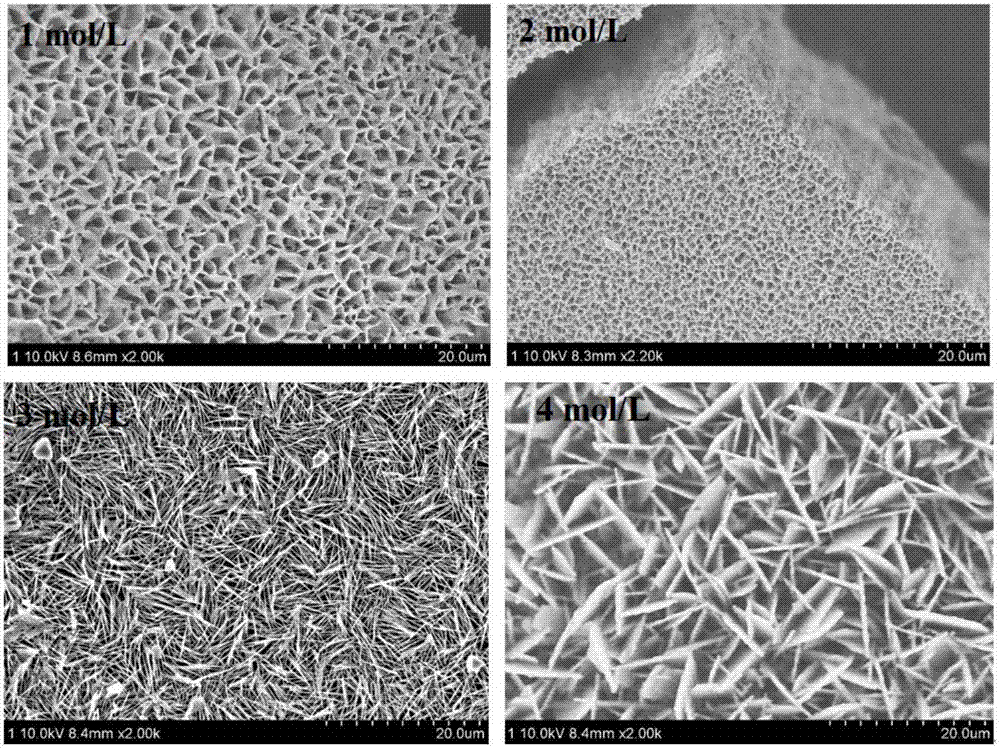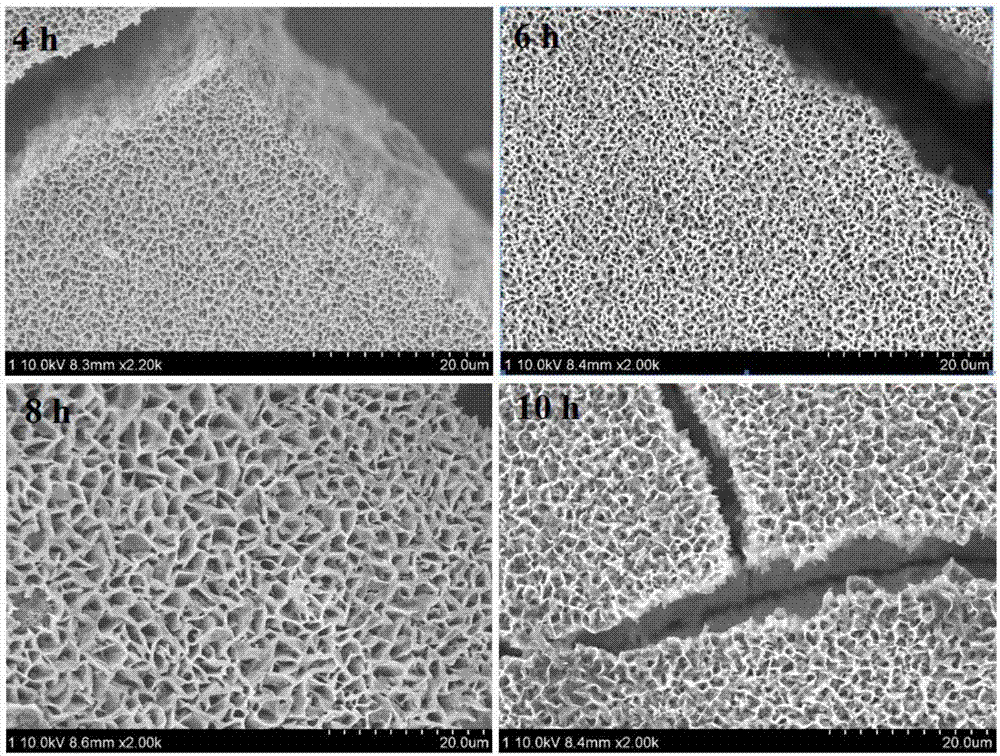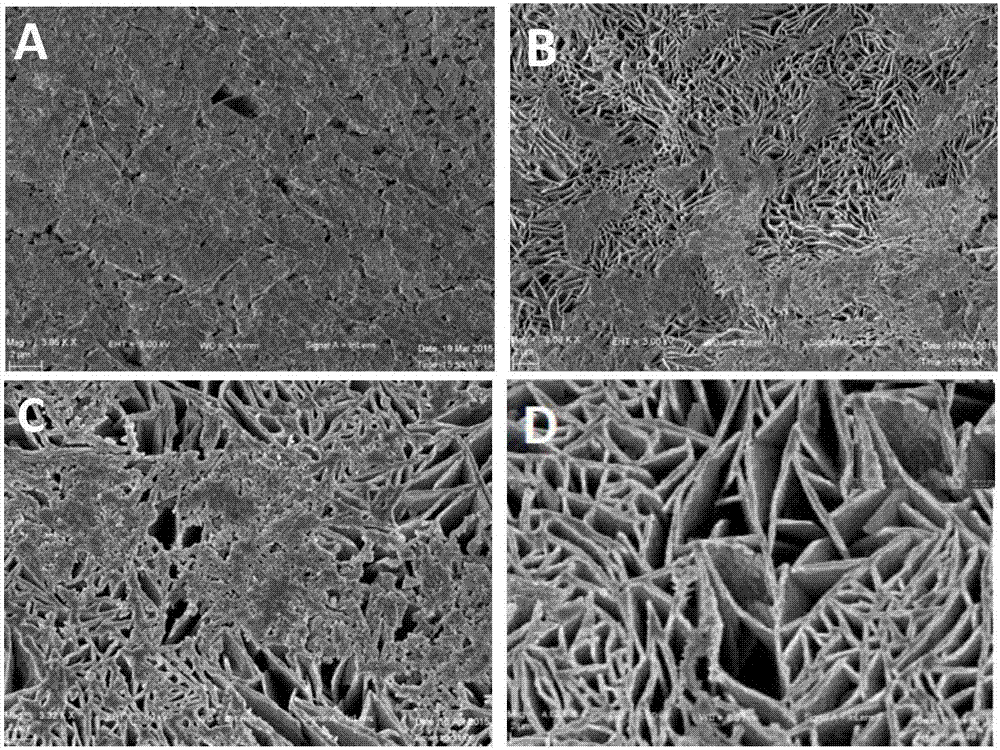Method for preparing three-dimensional porous bioactive glass
A bioactive glass, three-dimensional porous technology, applied in tissue regeneration, medical science, prosthesis, etc., to achieve excellent adsorption performance and improve the effect of sustained release of drugs
- Summary
- Abstract
- Description
- Claims
- Application Information
AI Technical Summary
Benefits of technology
Problems solved by technology
Method used
Image
Examples
Embodiment
[0023] figure 1 Shown are the morphology changes of porous silicate nanosheets at different NaOH concentrations. When the NaOH concentration is 1mol / L, a uniform and ordered array of silicate nanosheets is formed on the conductive surface of the glass. The size of the silicate nanosheets is about 500nm, and the adjacent nanosheets are closely adjacent to each other, forming a channel with a size of about 400 nm, and the large-area nanosheets are closely arranged to form a porous silicate nanosheet array. When the NaOH concentration is 2mol / L, a uniform and orderly array of silicate nanosheets is still formed on the glass. At this time, the size of the silicate nanosheets is reduced to about 200nm, and the adjacent silicate nanosheets They are closely connected with each other to form pores with a size of about 100nm, and the large-area nanosheets are closely arranged to form a porous silicate nanosheet array; with the increasing concentration of NaOH, the size of the silicate
PUM
 Login to view more
Login to view more Abstract
Description
Claims
Application Information
 Login to view more
Login to view more - R&D Engineer
- R&D Manager
- IP Professional
- Industry Leading Data Capabilities
- Powerful AI technology
- Patent DNA Extraction
Browse by: Latest US Patents, China's latest patents, Technical Efficacy Thesaurus, Application Domain, Technology Topic.
© 2024 PatSnap. All rights reserved.Legal|Privacy policy|Modern Slavery Act Transparency Statement|Sitemap



